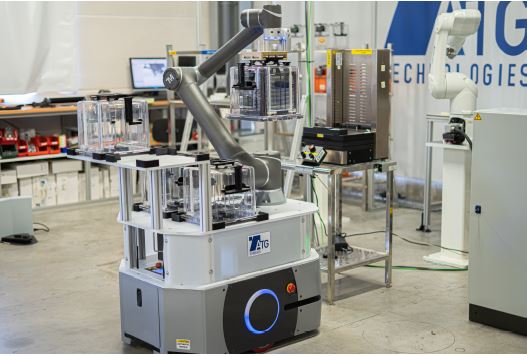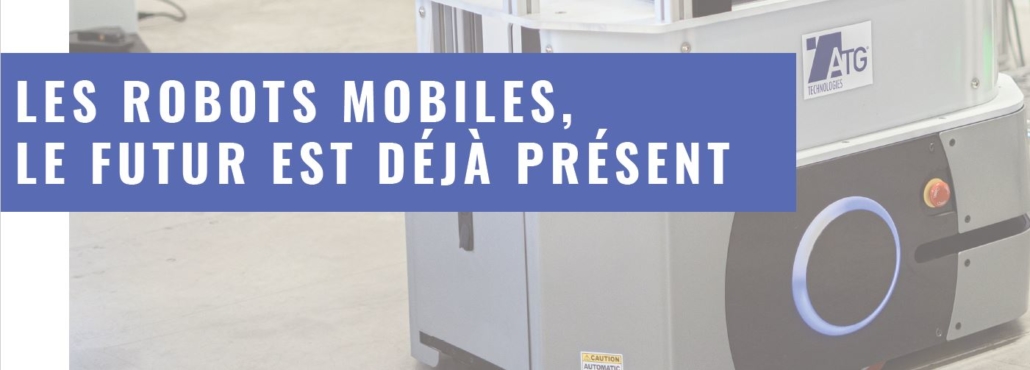A decade ago, many filmmakers predicted in their early-stage movies a future where cars could fly, food would be in its most minimalist form, and life was simple thanks to technology from a future that still seemed far away.
Obviously, part of the most phantasmagorical predictions ever invented by cinema, autonomous robotics has never been so close, as can already seen in action in some industry sectors and countries of the world.
AMRs (autonomous mobile robot)
First, let’s define together what a mobile robot really is: a mobile robot is therefore a robot capable of moving around and interacting with its environment. Mobile robotics is generally considered to be a subfield of robotics and information engineering.
When we talk about mobile robots, called AMR (autonomous mobile robot), or autonomous mobile robots we all remember Zora, Twendy One or even Robear.

These are some of the robots that appeared in the mid-2010s for assistance, at home or in retirement homes, landed directly from Japan. Very recently, autonomous mobile robots, collaborative and equipped with artificial intelligence, have distinguished themselves for the disinfection of rooms in the face of Covid-19.
It is therefore more widely in the industrial sector that autonomous mobile robots have taken on significant functions. Pioneering companies like Amazon, Cdiscount or Tesla have taken a considerable lead on this subject.

AMRs, but for what purpose?
For Amazon, it is about robotizing the operation of its warehouses. To do this, they bought a company specialized in the use of robots in logistics in 2012. Today, Amazon own more than 200,000 robotic vehicles called “drives”.
“There are many factors that contribute to Amazon’s impressive delivery times. But the real secret is how humans and robots work together to create a symphony of productivity, ”said Tye Brady, Chief Technology Officer of Amazon Robotics, the research and development subsidiary, in an interview about robots managing warehouses and deliveries.
At Cdiscount, robotic order picking is already in place. Thirty-four new robots and 22,550 compartmentalized bins have thus strengthened the operational capacities of the brand’s historic site.
Tesla introduced the world to the Shanghai Gigafactory in an impressive video featuring the continuous ballet of its mobile robots manufacturing the Tesla Model 3 for the Chinese market.
Massive, it is planned for the production of 500,000 vehicles per year. The tour continues through the interior of the building, where hundreds of robotic arms are busy. They are at all stages of the production chain, from stamping parts, to their assembly and then to their painting.
But AMRs tend to get closer and closer to civilian life, to the point that in some countries it is possible to meet them in your supermarket.
The benefits of autonomous robots, benefits for all
Although the presence of these robots worries the wage labor world, due to a false belief about robots alleged to be “thieves” of jobs, it is on the contrary new possibilities opened to employees of companies that have deployed AMRs:
- Reducing labor costs, one of the robot’s profitability factors is the decrease in the part of labor in the cost price.
- The flexibility of production management, the robot can operate alone, for a given time, without assistance. It adapts to different production series and remains a standard product, easy to maintain.
- The reduction in stocks and works in progress, the various tasks are grouped together in a robotic cell, thus intermediate stocks are eliminated.
- Improving quality, the robot performs superior and above all constant operations. The first noticeable benefits are the reduction in the number of rejects and the improvement in quality.
The benefits of an autonomous robot go beyond the profitability of companies, they are also an advantage for employees. Where today’s productivity requirements drive maximum output, the operator alone cannot meet these objectives. Robotization is the means of transferring the workload of difficult and boring tasks onto a machine, which therefore relieves the operator. The arrival of the robot gives the user a certain pride and values them. Operators are relieved of painful and tiring tasks and can devote themselves to more interesting missions, such as piloting, maintenance, and AMR’s improvement.
It is therefore a beneficial tripartite that opens up to the world of tomorrow. A serene relationship between AMRs, companies and employees, who can see in this revolution a new world of work which opens to them.






